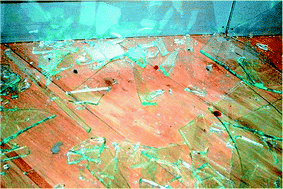In this paper we present the fundamentals for a protocol for optimizing isotopic determination of lead for comparison of man-made glass by use of laser ablation inductively coupled mass spectrometry (LA-ICP-MS). Comparison of objects in order to establish a possible common origin is relevant within different disciplines, such as forensic sciences and archaeometry. Measurement of isotope ratios (IR) of lead is a method widely used by geochemists in order to establish the origin and evolution of minerals and rocks. In archaeometry, lead isotopes are used to determine the provenance of artefacts. Lead isotope ratios have shown potential not only for provenance determination, but also for comparison of different objects. Laser ablation as a sample introduction method to inductively coupled plasma mass spectrometry (LA-ICP-MS) is an established method in the geosciences, where it is used both for concentration and isotope ratio analysis of solids, but has still not obtained the same position in forensic science and archaeometry. The elegance of laser ablation as a sample introduction system is due to the simplicity of sample preparation and high spatial resolution. This spatial resolution provides advantages over methods where the sample has to be dissolved or melted in larger amounts. In order to outline a suitable protocol for analysis of lead isotope ratios in glass by LA-ICP-MS, we have followed a threefold approach. Firstly, we describe the influence of laser conditions on the Pb-isotope ratios obtained for low-lead glasses such as SRM NIST 610–614. Secondly, we evaluate the influence of the selection of detectors (ion counters vs. Faraday detectors) on the reliability of the final result. Thirdly, we discuss the phenomenon of fractionation and instrumental mass discrimination for lead during analysis.

You have access to this article
 Please wait while we load your content...
Something went wrong. Try again?
Please wait while we load your content...
Something went wrong. Try again?


 Please wait while we load your content...
Please wait while we load your content...